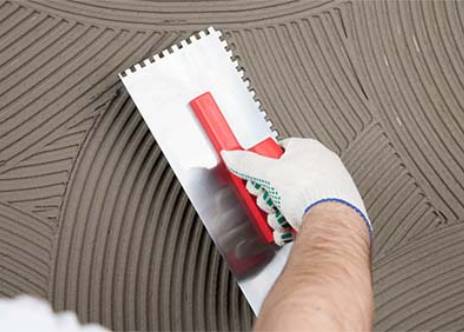
April 16, 2022
Before you start grouting your tiles, you will need to do a fast clean-up, but only after the tile glue has dried and has a solid grip on the tiles. It's a good idea to double-check the manufacturer's drying times. If the adhesive has dried, begin by wiping away any excess adhesive and allowing the adhesive to dry for a few more minutes just to be sure. Using pliers, remove the plastic spacers that you used to keep the tiles at the same distance apart. Finally, the tiles should be examined for any adhesive residue, which should be scraped away with a scraper.
How Does One Grouts Tile?
After you've cleaned off the tiles, you may start grouting. To begin, you must mix the tile grout. Most people use water because grout can be mixed with water or a latex mixer. This should be done according to the manufacturer's recommendations. If you're going to use water, avoid using warm water since it will set the grout before entering the joints. Once the grout is mixed, take roughly a handful at a time and work backwards from the corner of the room, laying down the grout and spreading it out with a grout spreader.
Some Final Touches in Grouting
The next step is to double-check that the grout is in the joints. Before beginning to wipe up the extra grout, know the grout's drying timeframes. If you don't, check the back of the container. It's time to wash off the excess grout once it has cured and you've followed the manufacturer's instructions to the letter. This is done with a damp, wet sponge, which must be kept clean and rinsed out regularly. Then, to clean the tiles, lightly pull the sponge across each tile at right angles only to clean them.
This occurs when the tile grout dries, and the surface of the tiles is removed. After the tiles have dried from the water, polish them with a dry cloth. It is strongly advised that you employ a waterproof seal, which can be accomplished by running a bead of sealant around crucial places like the bath and sink. This guideline can also be used for re-grouting; the only extra step would be to remove the previous grout with a razor blade and moistening the joints beforehand would make things easier. Other suggestions include not putting any remaining grout down the drain because it will solidify and clog it and using a waterproof grout in the bathroom.
You Can Also Go for Waterproof Grout
A cement-based mix is used to make traditional grout. When it becomes wet, it absorbs water rather than repelling it. Anyone who has scrubbed grout will attest to how easily it absorbs stains.
On the other hand, epoxy/waterproof grout is created by combining epoxy resins with a filler powder. This renders it waterproof and stain-resistant to a large extent. Because of its toughness, it's perfect for splash backs, floors, and high-traffic areas. Epoxy/waterproof grout is resistant to cracking, shrinking, and discolouration, making it excellent for use in moist areas like showers. It's also resistant to strong chemicals found in cleaning supplies. Unlike typical cement grout, Epoxy/waterproof grout does not require sealing because of its non-porous nature.